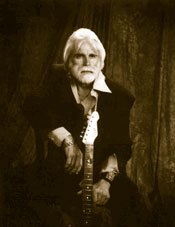Even before Mick Jagger and Keith Moon joined the British invasion of the 1960s, some Mississippi college kids in a band called the Rolling Stones awoke a generation. From 1955 to 1961, they pounded out a beat that grew louder through the night.
The Rolling Stones once knocked a frat house at the University of Alabama six inches off its foundation when dancers jumped and stomped until it fell. They bumped into Elvis, Johnny Cash and the Big Bopper at 4 a.m. at shows, auditoriums and lonely highway truck stops. They had hit songs, record deals and wild weekends. Monday morning they had classes at Mississippi State College (renamed Mississippi State University in the '50s).
Unlike Elvis, Jerry Lee Lewis and Roy Orbinson, the Rolling Stones weren't planning music careers. They studied engineering, agricultural science and business.
Andy Anderson, one of the founding members, was a freshman at Mississippi State in 1953 when his mama died. His family grew cotton on the 20,000-acre King and Anderson Plantation near Clarksdale. Like other early rockers with the same Mississippi influences, Anderson mixed "hillbilly" music with rhythm 'n' blues, and his band became wildly popular.
Anderson recalls this history in "Memoirs of the Original Rolling Stone" (AuthorHouse, 2010, $20), which he co-wrote with Erica Celeste.
"We were in the right place at the right time," Anderson says sitting in his Clinton home. Not only was the rockabilly sound an instant, international sensation, the Rolling Stones had something extra that other acts lacked. "None of those guys had a rock 'n' roll show band," he says.
It was the percussion, the beats of rhythm 'n' blues, that made the Rolling Stones stand apart from guitar-only acts. Anderson holds a metal cup that he's been drinking water from and taps it on the side with a pen, punctuating his point with each beat.
"They had good bands, but they didn't play music like we did," he says. "They tried to play rock with the wrong instruments, but we played it with power. We blew the walls out."
A set would start with a "hard-ass rocker," and then play slow-tempo tunes. Then more hard-ass rock would have the crowd screaming and jumping. Guitar players provoked each other, building the crowd up. They would play two-and-a-half hours without a break. They played at social functions and private parties where the audience liked it loud and yelled for more.
"Our egos got the best of us," Anderson says. "We said, 'Let's cut a record.'"
They recorded Anderson's original songs "Johnny Valentine" and "Tough, Tough, Tough" in 1957 for Sun Records in Memphis. The same record company that signed Elvis had its hands full with a stable of musicians. Obligations at Sun got spread thin, and the Rolling Stones record sat in a can on a shelf for years. The band got restless.
About the same time, London Records, a classical-music label in the United Kingdom wanted in on the burgeoning rock business and searched for a rockabilly group to promote in Europe. London Records found the Rolling Stones, and the band went to Nashville to record "Johnny Valentine" again.
But the studio would only allow union musicians to play, although Anderson did get to sing. He insists the Nashville musicians did not know how to play rock.
"You listen to the Memphis version and the Nashville version, it's two different songs," Anderson says. The Nashville song is country swing. Much to his dismay, radio stations played that version. It sold 750,000 copies.
After nine months of frustrating dealings with London Records, the Rolling Stones signed with Apollo Records. They didn't ask London for permission and they never dealt with London Records again.
In 1959, Anderson left the Stones to help run the family plantation in Clarksdale. He had a falling out with his dad, though, and soon left for Jackson. Anderson wound up starting another band, the Dawn Breakers, and they had some regional hits.
In the late 1960s, he moved to Los Angeles and roomed with Aaron Spelling for a bit, managed bands and actors, and even developed a golf course. He flirted with the idea of acting but other business ventures kept getting in the way. Anderson had to keep moving. He came back to Mississippi but wound up moving to New Mexico in 1976. He kept writing songs and performing until he cut off half of a finger on his left hand using a hydraulic lift that same year. (His book, by the way, says it was an elevator, but he says that's incorrect.)
The New Mexico influence shows in every room of Anderson's Clinton home. Clay tiles, wrought-iron details and mission-style furniture fill the home. He built a lot of the heavy furniture himself and created much of the iron details with his own hands.
About twice a year, old members from the Rolling Stones and the Dawn Breakers have a reunion and play for family and friends and rockabilly fans.
Anderson has no hard feelings that a later Rolling Stones group became more famous. While he was a Rolling Stone, life got dangerous. A series of disasters changed everything.
"We played with Big Bopper just one month before the crash," he says of the 1959 plane crash that killed the Big Bopper, Richie Valens and Buddy Holly.
"Every time I turned around, one of us was getting killed. We could walk into any place in the world and create a riot. It was a feeling of power," he says. "After a while, it wasn't a challenge anymore."
So Andy Anderson kept going to the next thing, never stagnating and, just like a Rolling Stone, gathering no moss.


